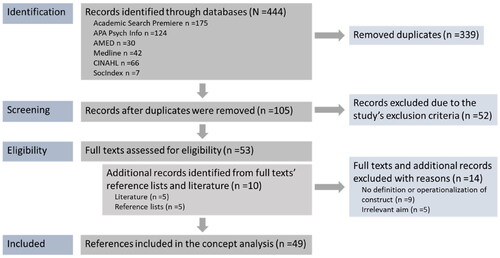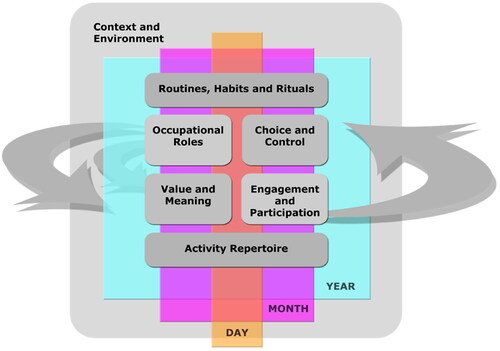Figures & data
Table 1. Search string and additional information regarding identifying concept use.
Figure 1. Flowchart presenting steps for the identification, screening, and eligibility and included scholarship in the concept analysis, according to the Preferred Reporting Items for Systematic Reviews and Meta-Analyses (PRISMA) checklist.

Table 2. Included articles, as well as other references, in the concept analysis.
Figure 2. Designing an occupational pattern involves considering the occupational possibilities encompassing an ‘activity repertoire’. It also includes the interplay of ‘internal and external forces for doing’, as well as ‘occupational roles’ to initiate routines, habits, and rituals. This design incorporates key dimensions, such as ‘choice and control’, ‘occupational engagement and participation’, as well as ‘occupational value and occupational meaning’, all interacting within an occupational pattern. Note that this figure does not address balance, as this is a separate process when an occupational pattern is balanced.

